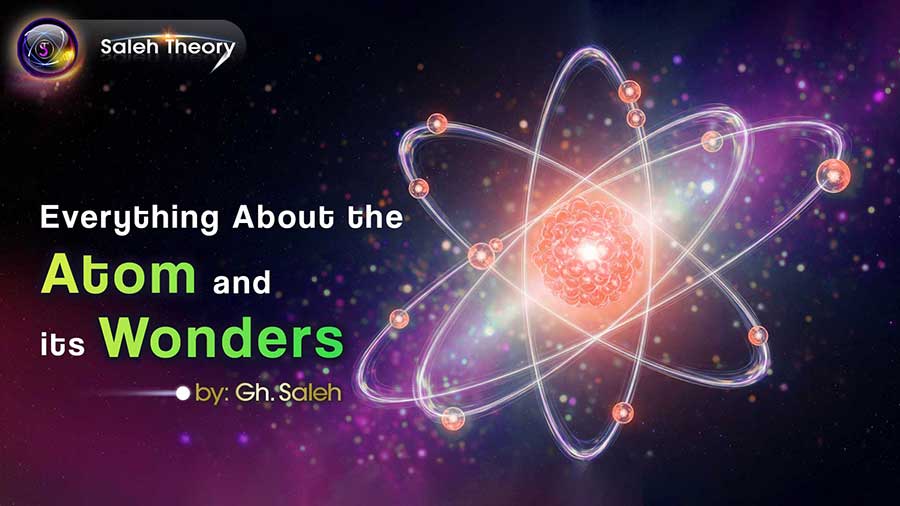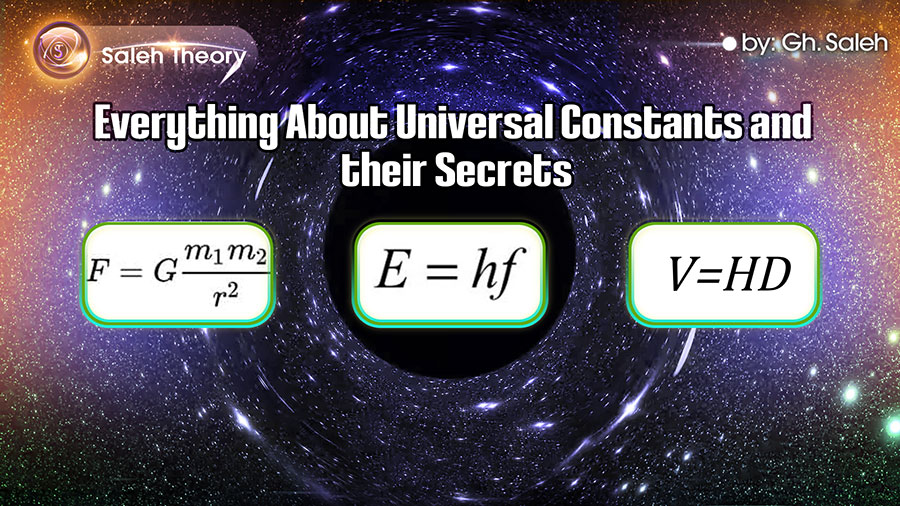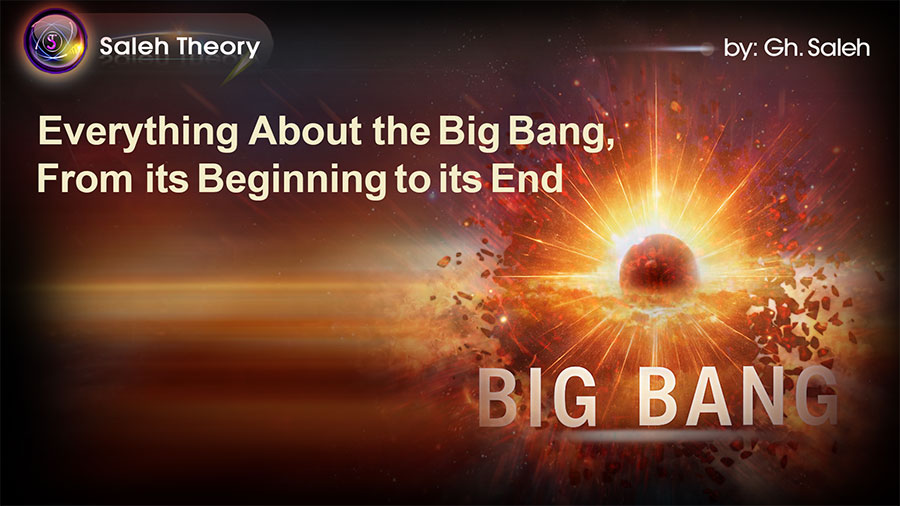
Everything About the Atom and its Wonders
Throughout history, humans have been trying to understand the components of the universe. Ancient Greek philosophers believed the universe was composed of four primary elements: water, earth, fire, and air. This theory prevailed for centuries until modern knowledge, employing empirical methods and scientific analysis, led to a more precise understanding of matter. As science advanced, it became clear that all substances are made of atoms.
Subsequently, scientists discovered that atoms themselves are composed of even smaller particles such as electrons, protons, and neutrons. These discoveries formed the foundations of modern atomic and nuclear physics. But was this the end of the journey?
According to the Saleh Theory, which offers a different perspective on the analysis of the universe, the fundamental constituents of matter—electrons, protons, and neutrons—are all constructed from photons and possess specific structures. The photon, commonly known as the particle of light, is proposed in this theory as a particle with a constant mass, serving as the primary building block of matter. From this viewpoint:
1. The electron is a hollow sphere made of photons. These photons move alongside each other to form this spherical shell (the electron).
2. The proton is a solid sphere made of photons. Photons are packed together to form a sphere with a smaller radius than that of the electron.
3. The neutron is a combination of proton and electron. Specifically, a neutron is the result of a proton being located at the centre of the electron's hollow sphere.
According to this theory, every material particle also exhibits rotational motion. This rotational motion exists in electrons, protons, and even the nuclei of atoms. Consequently, the frequency of these rotations can be calculated as follows:
Electron frequency in an atom
We present a novel approach to calculating the intrinsic frequency of an electron orbiting the nucleus, grounded in the Saleh Theory framework. Considering the electron's helical trajectory, we derive its frequency based on the general relationship between speed, distance, and time. The methodology incorporates a wave-like interpretation of the electron's motion, where the effective wavelength is defined as four times the atomic radius:

Where “C” is the speed of light and “r” is the radius of the atom.
Proton spin frequency
Rotational motion is a fundamental and pervasive phenomenon. The Moon rotates around itself and orbits the Earth, which in turn rotates around its axis and revolves around the Sun. The Sun orbits both itself and the supermassive black hole at the centre of the Milky Way galaxy, which itself is in rotation. Similarly, electrons rotate around themselves and orbit atomic nuclei, and nuclei themselves rotate around their own axes—at a speed near the speed of light.
Based on this analogy, the rotational frequency of a proton in the hydrogen atom can be calculated using a sinusoidal relation. The general expression is:

Where “C” is the speed of light and “r” is the radius of the proton.
The frequency of rotation of the atomic nucleus
Just as electrons rotate around themselves and orbit the nuclei, and protons rotate at the speed of light around their own axes, atomic nuclei also possess intrinsic rotational motion. According to Saleh Theory, this rotation occurs at the speed of light and can be described by a simple sinusoidal relationship. The rotational frequency of an atomic nucleus is given by:

Here, “C” is the speed of light in a vacuum, and “R” is the radius of the atomic nucleus. This approach generalises the concept of rotational frequency beyond sub-nuclear.
References:
[1] Saleh, Gh. "Novel and Innovative Physics Equations for the Modern Era Part C) Particle physics." Saleh Theory, 03 Aug. 2025, https://saleh-theory.com/article/novel-and-innovative-physics-equations-for-the-modern-era-br-part-c-particle-physics
[2] Saleh, Gh. "A Novel Explanation for the Particles, Waves, and Subatomic Particle Entities of Universe Based on Photons Part d) A Novel Explanation for Photons as Atom of Electrons and Protons." Saleh Theory, 26 Jul. 2025, https://saleh-theory.com/article/a-novel-explanation-for-the-particles-waves-and-subatomic-particle-entities-of-universe-based-on-photons-br-part-d-a-novel-explanation-for-photons-as-atom-of-electrons-and-protons
[3] Saleh, Gh. "Photon as a New Atom, Cidtonium as an Atom of Photon." Saleh Theory, 19 Jun. 2025, https://www.saleh-theory.com/article/photon-as-a-new-atom-cidtonium-as-an-atom-of-photon
[4] Saleh, Gh. "Proofing the Photon as Atom of Fundamental Particles (Electron, Proton, etc.) Utilizing Simple Existing Phenomenon and Mathematical-Physical Calculations in the Universe 2025." Saleh Theory, 19 Jun. 2025, https://www.saleh-theory.com/article/proofing-the-photon-as-atom-of-fundamental-particles-electron-proton-etc-utilizing-simple-existing-phenomenon-and-mathematical-physical-calculations-in-the-universe-2025
[5] Saleh, Gh. "A New Explanation for the Photon, a New Atom." Saleh Theory, 26 May 2025, https://www.saleh-theory.com/article/a-new-explanation-for-the-photon-a-new-atom
[6] Saleh, Gh. "New Calculation of the Frequencies of Fundamental Particles (Proton, Electron, ...) and their Applications in the Universe." Saleh Theory, 14 Jun. 2025, https://saleh-theory.com/article/new-calculation-of-the-frequencies-of-fundamental-particles-proton-electron-and-their-applications-in-the-universe
[9] Saleh, Gh. "A New Explanation for the Formation and Structure of Orbitals (1s2) in the Universe 2024, Part B." Saleh Theory, 29 Jan. 2024, https://www.saleh-theory.com/article/a-new-explanation-for-the-formation-and-structure-of-orbitals-1s2-in-the-universe-2024-part-b
[10] Saleh, Gh. "Discovery of a New Atom." Saleh Theory, 06 Sep. 2023, https://www.saleh-theory.com/article/new-marvelous-and-revolutionary-discoveries-about-photon
[16] Saleh, Gh. "Discovery of a New Atom." Saleh Theory, 16 Jan 2019, https://www.saleh-theory.com/article/discovery-of-a-new-atom
[20] Saleh, Gh. "Structure of Neutron." Saleh Theory, 20 Oct. 2017, https://saleh-theory.com/article/structure-of-neutron
[21] Saleh, Gh. "Structure of Proton." Saleh Theory, 18 Sep. 2017, https://saleh-theory.com/article/structure-of-proton
[22] Saleh, Gh. "The Actual and Realistic Structure of Electron." Saleh Theory, 08 Aug 2017, https://saleh-theory.com/article/the-actual-and-realistic-structure-of-electron
 Download PDF
Download PDF 

